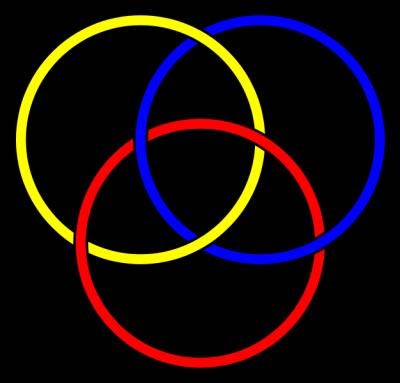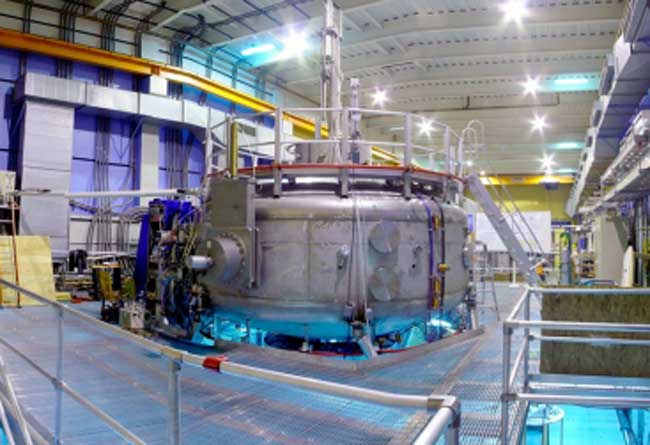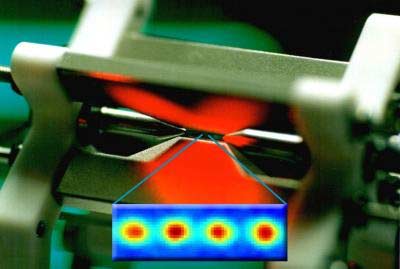Twisted Physics: 7 Mind-Blowing Findings
Spooky science

From bizarre antimatter to experiments that tie light up in knots, physics has revealed some spooky sides of our world. Here are seven of the most mind-blowing recent discoveries.
Quark-gluon soup

Another amazing feat of physics came out of Brookhaven's Relativistic Heavy Ion Collider this year. In February 2010 scientists announced they'd created a "quark-gluon soup" where protons and neutrons had broken up into their constituent building blocks – quarks and gluons.
It took extremely powerful collisions of gold atoms in the accelerator to achieve the temperatures necessary – about 7 trillion degrees Fahrenheit (4 trillion degrees Celsius). These conditions are 250,000 times hotter than the center of the sun and similar to temperatures seen just after the birth of the universe. They were the hottest temperatures ever reached on Earth.
Amazing particle triplets

Using lithium atoms, scientists recreated an ancient mathematical symbol that had been seen as far back as the second century in Afghan Buddhist art. The symbol, called the Borromean rings, depicts three rings linked together. If any ring were removed, they would all come apart.
Physicists predicted that particles should be able to form this same arrangement, but no one had been able to achieve it until now. The final realization, announced in December 2009, came 40 years after the prediction.
Light bends matter
While it's easy to see matter bending light – just look through a prism – it's rare to find light bending matter. But scientists saw just that in an experiment reported in March 2010. Researchers assembled flat ribbons of nanoparticles – tiny bits of matter only billionths of a meter long – in a darkened laboratory.
Then when the ribbons were exposed to light, they curled up into spirals. The results could help engineers design new types of optics and electronics.
Get the world’s most fascinating discoveries delivered straight to your inbox.
Levitating magnet

Nuclear fusion – the melding of atomic nuclei that happens inside stars – is a long-sought goal on Earth. If scientists can achieve it, it could offer a powerful source of energy with few negative environmental consequences.
Scientists took a step closer to this goal in January 2010 when they announced they'd built a levitating magnet that created some of the conditions thought to be necessary for fusion. By suspending a giant donut-shaped magnet in midair, researchers were able to control the motion of an extremely hot gas of charged particles contained within the magnet's outer chamber. The density of this gas was close to what's needed for nuclear fusion, the researchers said.
New antimatter particle

By smashing particles together at close to light speed inside an atom smasher, scientists created a never-before-seen type of matter: an anti-hypertriton.
This particle is weird in many ways. First, it's not normal matter, but its eerie opposite, called antimatter, which annihilates whenever it comes into contact with regular mass. Second, the anti-hypertriton is what's called a "strange" particle, meaning it contains a rare building block called a strange quark, which isn't present in the protons and neutrons that make up regular atoms.
The experiment was conducted at the Relativistic Heavy Ion Collider at Brookhaven National Laboratory in Upton, N.Y. The results were announced in March 2010.
Knots of light

Light may seem to travel a straight line, but sometimes it gets twisted into knots. In January 2010 researchers reported using a computer-controlled hologram to twist beams of laser light into pretzel shapes. The holograms, which direct the flow of light, were specially created to send light in certain directions and shapes.
The researchers used a field of mathematics known as knot theory to study the resulting loops. These swirls of light, called optical vortices, could have implications for future laser devices, the physicists said.
Spooky entanglement

One of the strangest predictions of the theory of quantum mechanics is that particles can become "entangled" so that even after they are separated in space, when an action is performed on one particle, the other particle responds immediately.
In June 2009 scientists announced they had measured entanglement in a new kind of system – two separated pairs of vibrating particles. Previous experiments had entangled the internal properties of particles, such as spin states, but this was the first time scientists had entangled the particles' pattern of motion, which is a system that resembles the larger, everyday world.



